Blueberry plants grown in containers will thrive in the summer but in many climates they will need a little extra care in winter to prevent their roots from freezing.
Find out how to protect a potted blueberry bush in winter, whether you’re overwintering it indoors or outdoors!
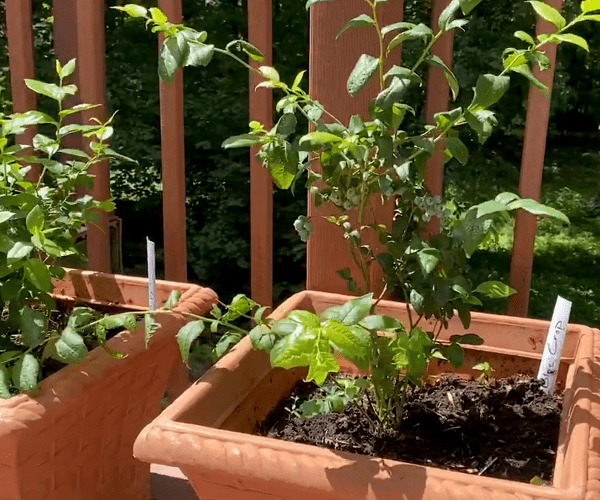
Jump to: Hardiness Considerations | Outdoor Care | Indoor Care
This post may contain affiliate links, and you can read our disclosure information here–
Understanding Hardiness Designations of Blueberry Plants
Hardiness varies between different types of blueberry shrubs.
If you’d like to overwinter yours, the first step is to find out the lowest winter temperature that the variety you are growing can withstand outdoors.
Based on this, you can decide whether it can stay outside in your climate or if it’ll be better off in a shed or garage.
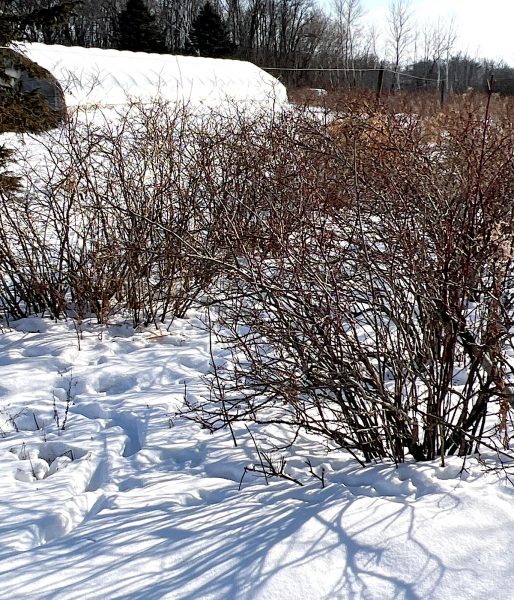
When it comes to protecting a blueberry plant grown in a pot in winter, it’s important to remember that they’re not as hardy as blueberry plants grown in the ground where their roots are insulated by plenty of soil.
Their roots just aren’t as well-protected in a container.
As such, it’s best to take the USDA hardiness zone your plant is rated for and then add 1-2 zones if you want to overwinter it “outdoors” in a pot.
For example, if your blueberry plant is listed as hardy to zone 4, that means it will survive “in the ground” to the typical temperatures of zone 4.
If it is in a pot however, it will only survive outdoors to zone 5 or 6. In other words, you may have to bring it inside if it is in a pot.
Zone 3 is the coldest winter weather hardy blueberry cultivars can handle.
Although your mileage may vary depending on the cultivar, there are five basic “categories” of blueberries:
- Lowbush: minimum Zone 3 (so Zone 5 in a pot); a few varieties down to Zone 2.
- Half-high: minimum Zone 3 (so Zone 5 in a pot).
- Northern highbush: minimum Zone 4 (so Zone 6 in a pot); a few varieties down to Zone 3.
- Southern highbush: minimum Zone 6 (so Zone 8 in a pot); a few varieties down to Zone 5.
- Rabbiteye: minimum Zone 7 (so Zone 9 in a pot).
| Category | Ground Zone | Pot Zone |
|---|---|---|
| Lowbush | Zone 3 | Zone 5 |
| Half-high | Zone 4 | Zone 6 |
| Northern highbush | Zone 4 | Zone 6 |
| Southern highbush | Zone 6 | Zone 8 |
| Rabbiteye | Zone 7 | Zone 9 |
Based on this hardiness information, you can decide whether to overwinter your potted blueberry shrubs indoors or outdoors.
Know also that blueberries need a dormancy period. This means you can’t keep them in a warm place like your living room during winter.
Tip: If you live in a warm climate like Florida, this can mean it’s difficult to grow varieties other than Southern Highbushes or Rabbiteye. The others just need more cold to grow properly!
Protecting Container-Grown Blueberry Plants Outdoors
Unless you live at least two zones above the hardiness cutoff for your blueberry bush, it’s important to take some steps to help protect it if you are going to leave it outside in a pot over the winter.
Take Note! The roots are the main consideration (as the leaves and tips will grow back), and the roots are more exposed to the cold in a pot. The more insulation you can add to help keep them warm, the better.
The shallow blueberry root system can really suffer and even die off if it ends up freezing, so it’s important to prevent this from happening.
This especially applies if the plant is in the type of container that doesn’t offer much in the way of protection (i.e., thin plastic or terra cotta).
A small, single-walled thin plastic pot exposes the roots far more than an extra-large and thick container made of fiberglass.
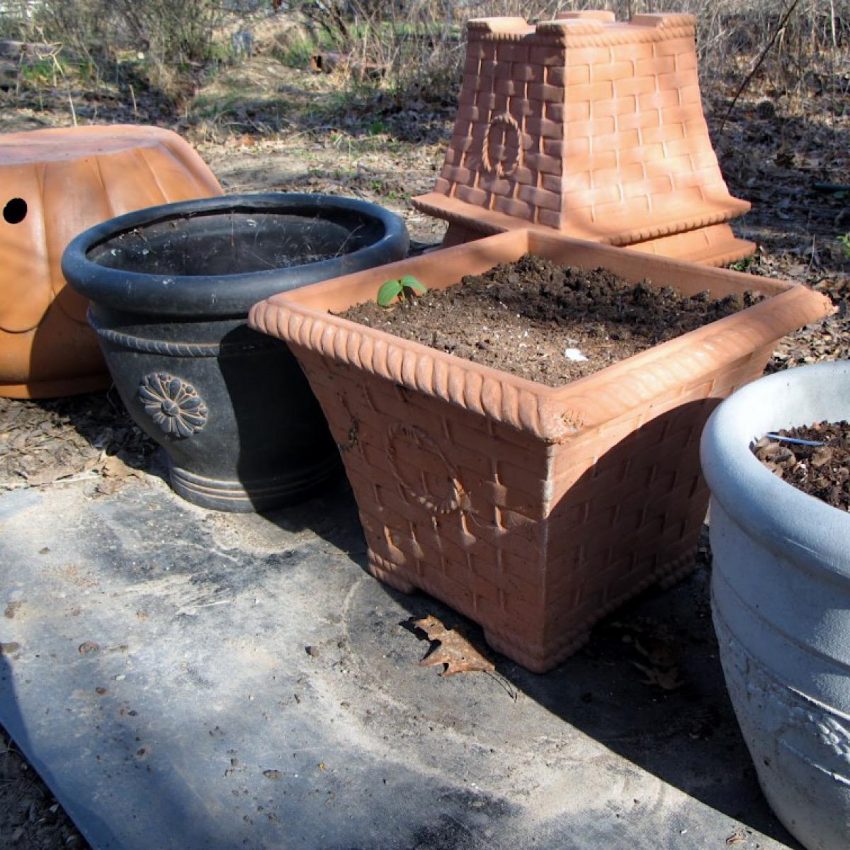
They can suffer if they don’t go fully dormant (or emerge from dormancy) due to warm temps interspersed with sudden cold. The same applies if your area is receiving unusually cold temps this year.
Tip: If temperatures are rising and dropping sporadically, as when spring is approaching, you may need to place the shrub in a garage or shed.
Here are some steps you can consider to help your potted blueberry bush survive being outdoors in winter:
#1. Bury the Container and Roots
The best thing you can do for a blueberry shrub when overwintering outdoors in a pot is to bury the container in soil.
If you have a garden with some space available, this will help protect the roots.
Just dig a hole that matches the container, pop the plant in there, and cover it in such a way that the roots can benefit from the extra insulation but the stem is exposed.
If you can’t bury the pot, try to place it in a sheltered position.
For example, a spot against a wall or other protected area will help protect it from the worst of the winter weather.
If you have multiple potted plants, you can place them together with the most sensitive ones in the center.
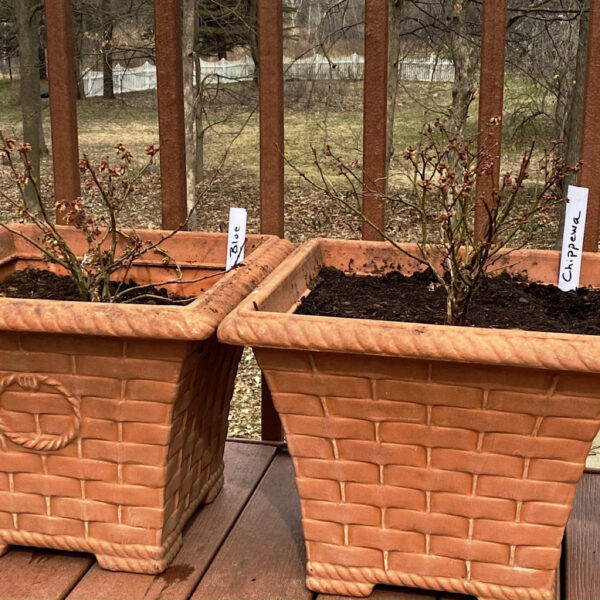
#2. Mulch
As you’ve probably concluded by now, overwintering blueberries in a pot outdoors is all about insulation.
Mulching is a great way to do this: you can add up to 8″ of straw, pine needles, or leaf mulch in and around the container to help insulate your plant.

#3. Cover the Plant
There are loads of different handy pot covers and even mini greenhouses for sale that you can use to help protect your blueberry shrub. Even just a layer of plastic, bubble wrap, burlap, or horticultural fleece can be helpful!

#4. Watering
During the winter months, your blueberry bush won’t require nearly as much water as in summer.
Dormant plants barely need any water, although you shouldn’t let the soil get bone dry either.
A layer of snow should be fine to keep your plant hydrated.
If there is none and if it hasn’t rained in a while, it’s a good idea to lightly water once a month. No fertilizer, please!

Tip: Dormant blueberry shrubs can look dead during winter and early spring, with brown branches and no green in sight. Even if you’re sure yours has kicked the bucket, wait well into spring to throw it out. It may just surprise you.
Overwintering Blueberry Plants Indoors
If you live in a colder zone than your blueberry shrub will be able to handle over the winter, it’s best to just place it indoors.
Sure, some are quite hardy, but it would be a shame to lose yours!
Tip: The best time to move them indoors is late fall when the temperature has dropped and their leaves are no longer green (most varieties have leaves that turn dark red or maroon).
Finding the Right Location
As mentioned above, you can’t just put a blueberry plant in your living room for the winter. They need a dormancy period to bud and flower properly next year.
To trigger and maintain this dormancy, they need to be exposed to lower temperatures.
Room temp may be perfect for us, but it’s just too warm for your blueberry!
Research has found that even Rabbiteyes, the least cold-hardy variety, generally need 500+ chill hours to bud properly the next year.
Did you know? A chill hour is defined as an hour during which the temperature reaches below 45 °F.
As such, if you want to keep a blueberry indoors for winter, it needs to be in an unheated spot so it can start accumulating those chill hours.
A garden shed or garage is perfect, as it offers protection against the wind and harsh weather conditions, but still gets cool enough for the shrub to go fully dormant.
I overwinter my potted plants in my garden shed which has windows and stays around 55 degrees F most of the winter.

Light & Water Needs
One issue many gardeners run into when it comes to overwintering potted blueberries indoors is the lack of light. Most sheds and garages don’t have much in the way of windows.
Although a dormant blueberry bush should be able to survive without much light for a while, as it’s not photosynthesizing as much as it would in summer, it can’t survive like this for months on end.
Place yours next to a window or consider using a grow light if indoor conditions are extremely dark.
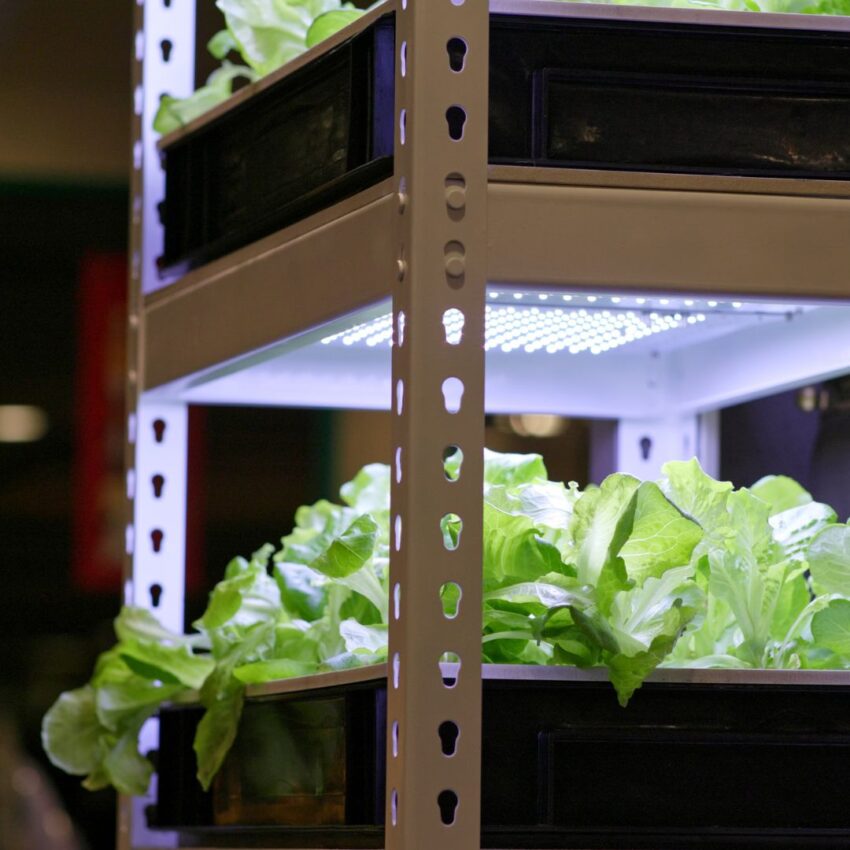
As for water, your plant will not need much water over the winter, but it shouldn’t stay bone dry all winter either.
Check the soil occasionally; if you stick a finger into it and it feels dry down to one inch, give the shrub a drink. Don’t overdo it, though!
Tip: The perfect time to prune a blueberry plant is winter when it’s dormant.
You can remove excess small branches, as well as any that are dead or don’t look their best. It helps to get the best possible harvest next year!
You can also re-pot your shrub during this time.
Bringing Overwintered Plants Back Outside in Spring
If your blueberry bush has just spent a few months in a nice sheltered shed, it’s best not to move it straight back outside once spring rolls around.
After all, it’s probably not used to outdoor weather conditions (wind, hard rain) anymore, nor will it be able to handle sudden large amounts of sun.

Additionally, to avoid shocking the plant, stretch the transition from indoors to outside over at least a week or two.
Place it outside for a few of the warmest hours of the day at first, and be sure to pick a more sheltered spot in the beginning.
**Want more like this? Subscribe to our Sunday newsletter to get recipes, gardening guides, and diet help. Let’s go from Inspiration to Done!

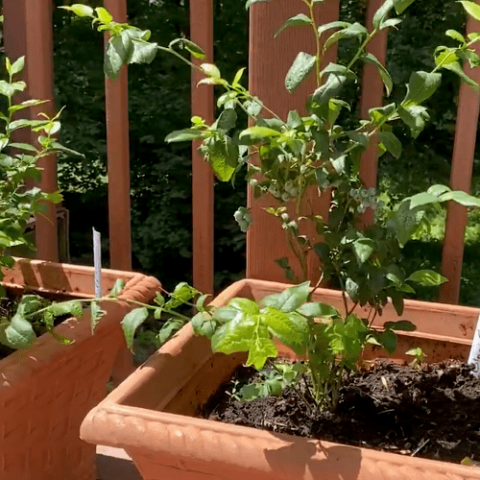
Please I have a question about blueberries plants.
I have four blueberries plants,they are in pots,in winter I bury them, I would like to know what kind of fertilizer can I use , I used Espoma Organic Soil Acidifier for 3 years but one plant changed the fruit color , they are white blueberries I don’t know why , now I bought berry tone fertilizer it’s okay to use that? thanks
Hi Ruby, I have never heard of blueberries turning white before? It sounds like you may be overfertilizing rather than the wrong kind of fertilizer. Basically any fertilizer for acid plants like Azeleas etc. should work fine. I don’t use a lot of fertilizer on my plants, but I do use a lot of compost. I would try repotting them with a hefty amount of compost and then letting them rest without too much fertilizer for a while. They will usually tell you they need some food as their leaves start to turn yellow.